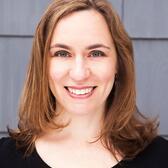An urban activist
When Jane Jacobs died earlier this year, we heard a lot about her urban activism to save neighborhoods from the destruction of a proposed Lower Manhattan Expressway. (We at JWA, by the way, learned as we researched a memorial piece on Jacobs that, contrary to popular belief, she was not Jewish). Friday’s Forward has a great article about a woman named Lillian Edelstein, whose own urban activism preceded Jacobs’. In the 1950s, Edelstein led the opposition to the plan that put the Cross Bronx Expressway right through the stable, lower-middle class Jewish neighborhood of East Tremont. Her resistance to this plan failed, and East Tremont became a slum.
In his piece in the Forward, David Kelsey resurrects Edelstein’s story and suggests that we read it differently: perhaps her failure may have helped shape Jacobs’ winning strategy.
Like Kelsey, I see something noble in Lillian Edelstein, who stood up to Robert Moses, the powerful urban planner, to protect her neighborhood. And I think it is a big loss to the American Jewish community that neighborhoods like hers don’t exist in most cities anymore (a reality that I know is due to many more factors than just urban highways like Moses’).
I’m an urban girl myself, and I’ve chosen to live in a diverse, urban neighborhood. This has meant forgoing certain Jewish resources and facing certain challenges to my Jewish practice (for example, Shabbat observance is more difficult in my neighborhood). But it is also informed by Jewish values, such as the responsibility to recognize the humanity of others, which I think happens more easily when your neighbors are different from you.
For me, this choice feels worthwhile, and is just another aspect of the ongoing tension I experience between balancing my need for a strong Jewish community with my sense of responsibility to the larger community. But sometimes I wistfully imagine what the Jewish community would be like today if activists like Edelstein had been more successful in preventing the decline of Jewish urban life.







You suggest two different aspects of what it means for Jews to live in urban neighborhoods. One is that the neighborhood Edelstein was trying to preserve was probably one where many Jews lived close to one another and as a result were able to live amidst multiple varieties of jewish experience: religious, social, political, cultural etc. Clearly cities that no longer have dense urban Jewish communities (i.e. most U.S. cities) no longer have the potential for that kind of dense rich Jewish life.
In addition, as so many Jews move progressively further from the urban centers in their regions (and from the urban ills that come along with those centers), they often remove themselves from engagement in the social and political problems that our communities and societies must confront.
It seems ironic that moving away from the city, physically and spiritually, results in Jewish communities that are both less Jewish AND less engaged in the broader society.